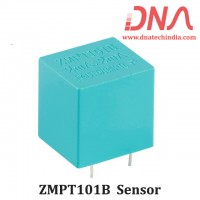Capacitors in Parallel |
|
Capacitors are said to be connected together "in parallel" when both of their terminals are respectively connected to each terminal of the other capacitor or capacitors. The voltage (Vc) connected across all the capacitors that are connected in parallel is THE SAME. Then, Capacitors in Parallel have a "common voltage" supply across them giving |
|
VC1 = VC2 = VC3 = VAB = 12V |
|
In the following circuit the capacitors, C1, C2 and C3 are all connected together in a parallel branch between points A and B as shown. |
|
|
|
When capacitors are connected together in parallel the total or equivalent capacitance, CT in the circuit is equal to the sum of all the individual capacitors added together. The currents flowing through each capacitor and as we saw in the previous tutorial are related to the voltage. Then by applying Kirchoff's Current Law, (KCL) to the above circuit, we have |
|
|
|
and this can be re-written as: |
|
Then we can define the total or equivalent circuit capacitance, CT as being the sum of all the individual capacitances add together giving us the generalized equation of |
|
|
Parallel Capacitors Equation |
|
|
|
When adding together capacitors in parallel, they must all be converted to the same capacitance units, whether it is uF, nF or pF. Also, we can see that the current flowing through the total capacitance value, CT is the same as the total circuit current, iT |
|
We can also define the total capacitance of the parallel circuit from the total stored charge using the Q = CV equation for charge on a capacitors plates. The total charge QT stored on all the plates equals the sum of the individual stored charges on each capacitor therefore, |
|
|
|
We can divide through by the voltage, (V) this is because it is common to both sides. Also, the number of Capacitors in Parallel is not important for this equation, and can therefore be generalized for any number of parallel capacitors connected together. |
|
|
Example No1 |
|
Taking the three capacitor values from the above example, we can calculate the total equivalent circuit capacitance as being: |
|
CT = C1 + C2 + C3 = 0.1uF + 0.2uF + 0.3uF = 0.6uF |
|
One important point to remember about parallel connected capacitor circuits, the total capacitance (CT) of any two or more capacitors connected together in parallel will always be GREATER than the value of the largest capacitor in the group and in our example above CT = 0.6uF whereas the largest value capacitor is only 0.3uF. |
|
When 4, 5, 6 or even more capacitors are connected together the total capacitance of the circuit CT would still be the sum of all the individual capacitors added together and the total capacitance of a parallel circuit is always greater than the highest value capacitor. This is because we have increased the total surface area of the plates. If we do this with two identical capacitors, we have effectively doubled the surface area of the plates and this doubles the capacitance of the combination and so on. |
|
|
Example No2 |
|
Calculate the combined capacitance in micro-Farads (uF) of the following capacitors when they are connected together in a parallel combination: |
|
a) two capacitors each with a capacitance of 47nF b) one capacitor of 470nF connected in parallel to a capacitor of 1uF |
|
a) Total Capacitance, |
|
CT = C1 + C2 = 47nF + 47nF = 94nF or 0.094uF |
|
b) Total Capacitance, |
|
CT = C1 + C2 = 470nF + 1uF therefore, CT = 470nF + 1000nF = 1470nF or 1.47uF |
|
So, the total or equivalent capacitance, CT of a circuit containing Capacitors in Parallel is the sum of the all the individual capacitances added together and in our next tutorial about Capacitors, we look at connecting together Capacitors in Series and the affect this combination has on the circuits total capacitance, voltage and current. |
|
|
| Reproduced with permission from Wayne Storr |
| ( http://www.electronics-tutorials.ws/capacitor/cap_6.html ) |






